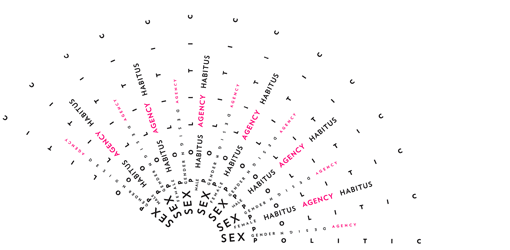a practitioner reflects…
Posted on May 8, 2011 | posted by:I am a designer. Therefore, when asked, “What if designers were educated to be very articulate about how they design rather than celebrating the artifacts they produce?” I responded by redesigning the question in an attempt to better understand how I might respond. The result:
What if I was educated to be very articulate about how I design rather than celebrating the artifacts I produce?
Designer or narcissist? Admittedly, both. Self-reflection is integral to the journey, particularly when crafting new practices. And for the last nine months, I’ve afforded myself the space to begin re-defining my practice as a Transdisciplinary designer.
So, how might I acquire the language necessary to articulate my design process?
In the initial phase of my research, I employed various authors and designers to help define the qualities that characterize me as a designer. Turns out, innate reflection is embedded in my process, however it is rarely made explicit. In the plan > act > observe > reflect continuum, the majority of my time is devoted to the planning phase. There are occasions when I become so consumed by the planning phases of a project that the development becomes paralyzed.
Reflection on the other hand probably only consumes 15% of my energy in the equation. Initially it is necessary for me to frame larger meta-narratives in a more personal context, glean narrow insights, and then step back into the entire ecology and begin to speculate.
Consequently, upon reflection I realized the result of my initial inquiry was not a mere outline of personal attributes, but a more grounded understanding of design’s capacity.
Design is Politics.
Throughout the literary review, I coded words within the conversation that spoke directly to the theoretical and practical agency of design. For the second phase of my research, I distilled the words into a succinct lexicon that I would define by diagramming their relative associations. “There is a balance of pragmatics and principle required if the conventional distinction between research and practice is to escape an impasse.” (Scholarly Design as a Paradigm for Practice-Based Research, T.Marshall & S. Newton)
As a visual communicator one might think that diagramming is a crutch. Unfortunately, it is not. I’m accustomed to composing designs that communicate information. However, diagramming in an effort to generate knowledge is a relatively new tool. In an effort to embrace the rational problem solving and reflective practice of design as posited by Herbert Simon and Donald Schon, respectively, I began diagramming.
Gender. Politic. Design. Language. Sex. Power. Agency. Capacity. Agency. Sustainment.
Negotiations unfolded as words migrated across the page. The slightest movement challenged the constitution of every word. “Words are bodies that can be hurled at the other. They can land in the psyche or explode in the soma.” (SCUM Manifesto introduction, A.Ronell) The rigor inherent in this dynamic confirmed my methodological approach. Definitions evolved, the lexicon expanded and I began to have a better understanding of my design practice.
Finally, sixteen weeks later, I’ve engaged in what I feel is a process that parallels design-led research. I know believe a better question for initial inquiry might have been:
How might my process construct a new design vernacular?
“Our concern in design research has to be the development, articulation and communication of design knowledge.” (Design Research: A Disciplined Conversation, N. Cross)
